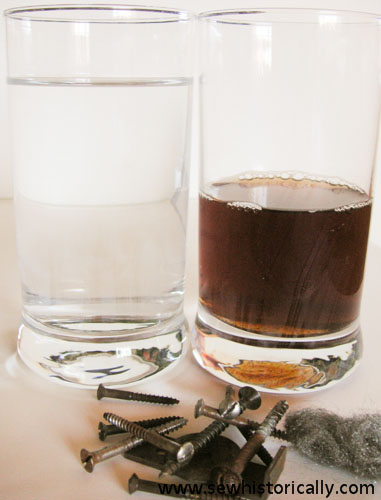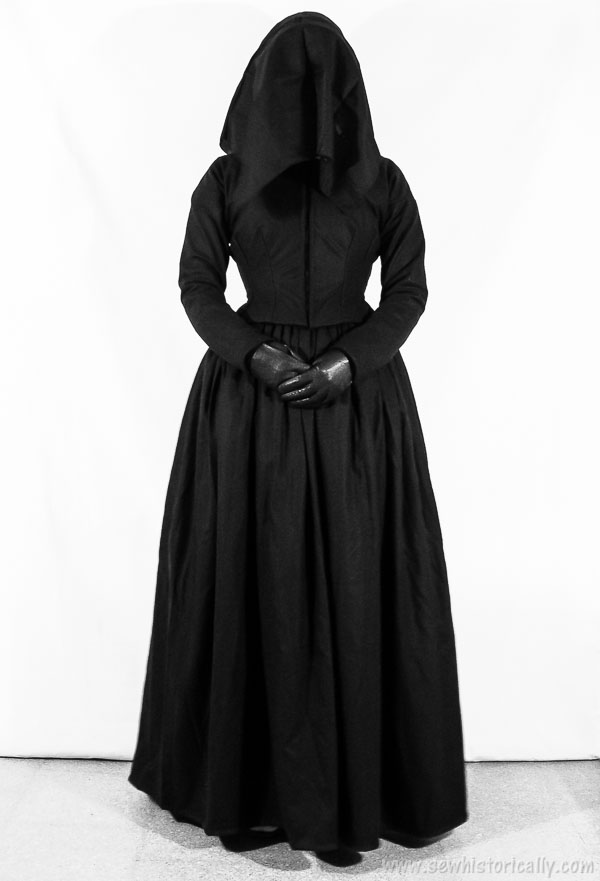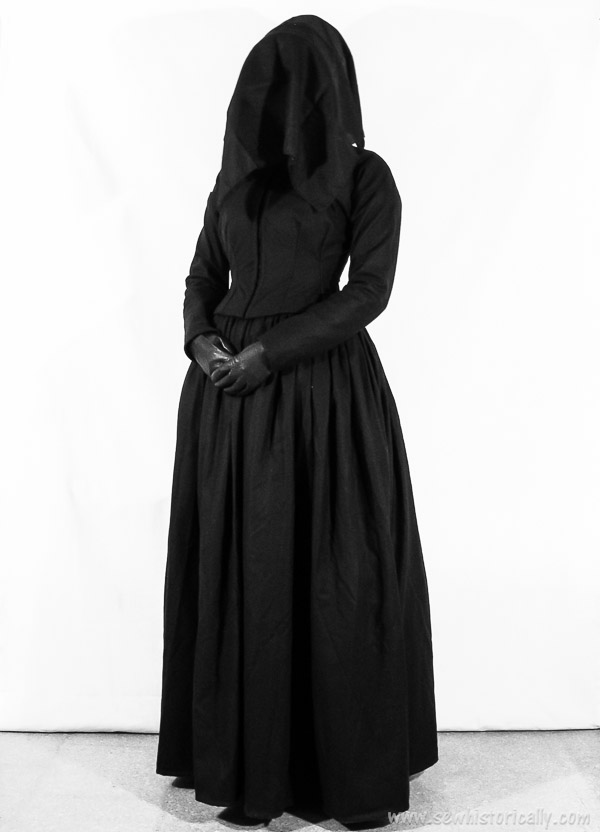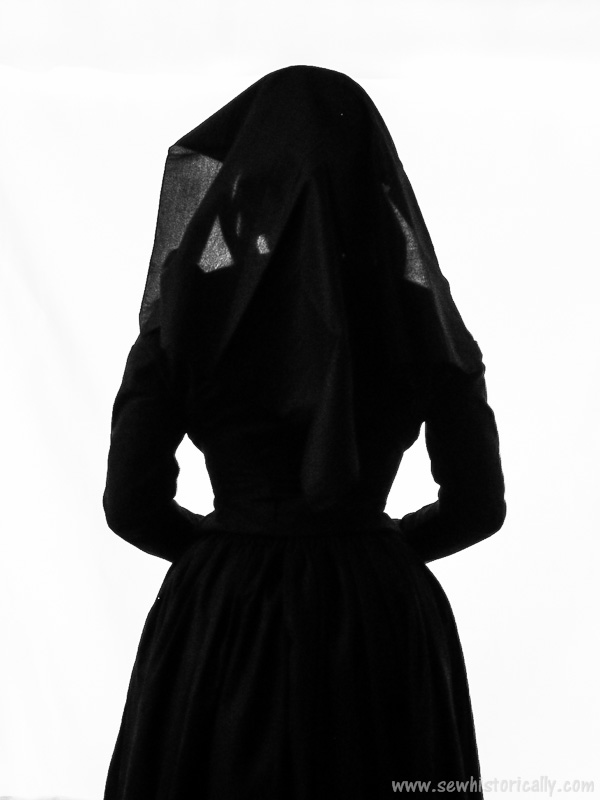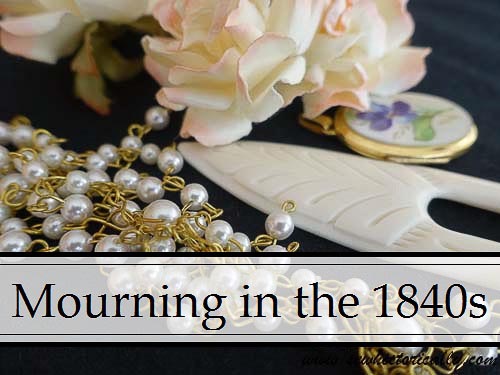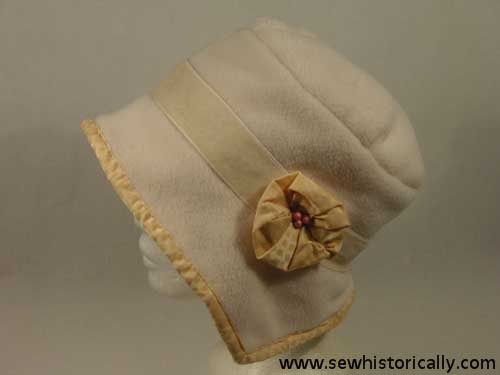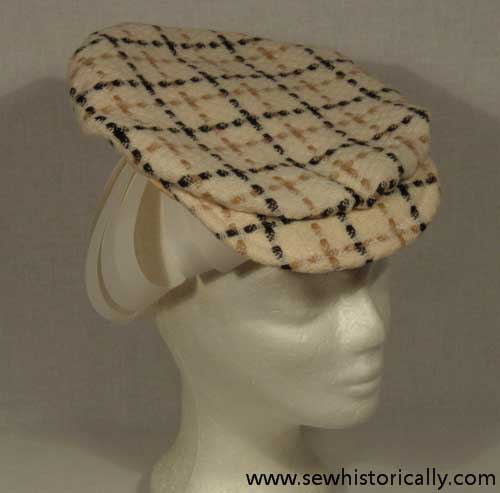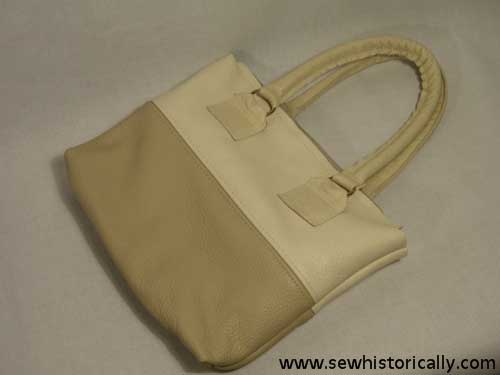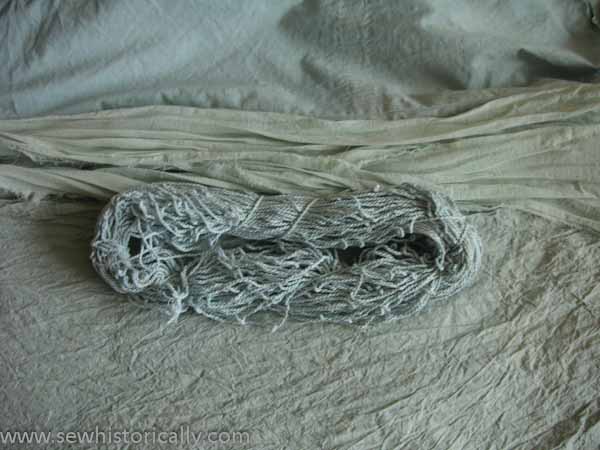DIY iron liquor mordant is very useful: as mordant before you dye fabric with natural dyes, to weather wood and dye leather black naturally. Iron liquor is easy to make at home and really cheap. In this tutorial I show you how to make DIY iron mordant using things you probably have at home! Continue reading How To Make DIY Iron Liquor Mordant For Natural Dyeing
Monthly Archives: March 2015
1840s Mourning Dress
Here I’m in my 1840s mourning outfit. The dress is black wool fabric with separate bodice and skirt. The bodice is boned and lined with cotton fabric. Skirt and bodice are closed with hooks and eyes. The entire dress is hand sewn.
With the dress I’m wearing a black 1840s bonnet, black leather gloves (for deepest mourning the gloves would be too shiny), and a black veil. The veil should be dull black silk crape (1840s mourning clothing); but as I hadn’t any crape, I’ve used cotton fabric.
Under the dress, I’m wearing a chemise, corset, drawers, stockings, and 4 cotton petticoats.
Here you’ll see an 1860s photograph of a lady with veil over her face. Here’s an 1845 mourning dress, an 1850s mourning dress of dull fabric, and an early 1850s black silk mourning dress. Here’s a lady probably in second stage mourning with shiny gloves, fur muff, and the veil no longer over her face.
More about Mourning:
Mourning In The 1840s
‘It shows the best taste to make mourning as plain and as little fanciful as possible’. (The workwoman’s guide, 1840)
Mourning customs were very strict in the 1840s, especially in England. However, wearing mourning wasn’t a ‘punishment’, mourning clothes helped to protect the feelings of the person in mourning. Every stranger they met would recognize their mourning clothes and wouldn’t hurt the feelings of the mourner with unnecessary jaunty remarks.
1840s mourners knew four stages of mourning: They began with a dull black dress, gradually adding more luster and color, and finally wearing a lavender, purple or scarlet dress in the last mourning stage before they returned to wear colors.
Mourning clothes in the 1840s were still dyed with natural dyes. True black was difficult to dye with natural colors – wool and silk is easier to dye than cotton or linen – and it was prone to color bleeding. Mourning dresses could stain the skin and a shower of rain would ruin the mourning veil. Mourning dresses should also not be stored together with white or colored dresses, as they’d stain them. Mourning clothes could be stored separately in divans (The workwoman’s guide, 1840). Continue reading Mourning In The 1840s
1850s Carrickmacross Lace Day Cap
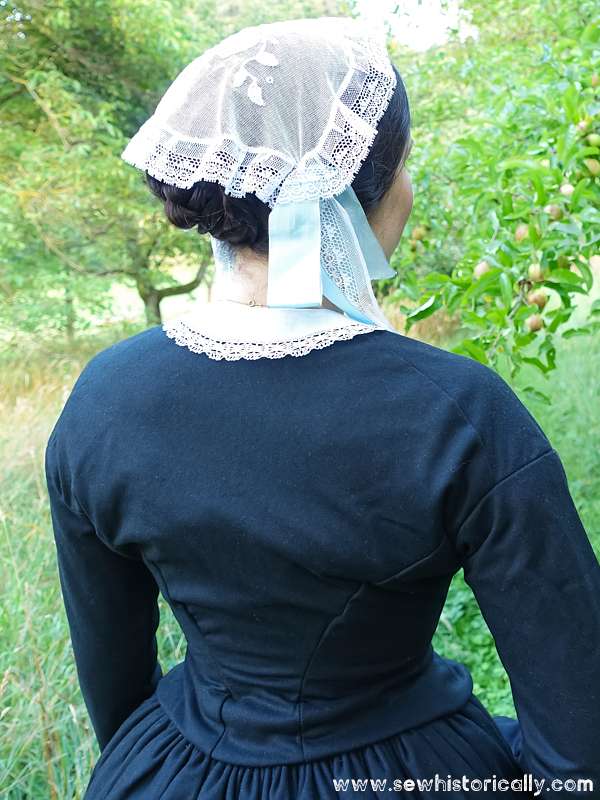
A couple of years ago I embroidered an 1850s Carrickmacross lace day cap completely from scratch by hand! 😀 Continue reading 1850s Carrickmacross Lace Day Cap
1920s Cloche Hat
Here’s my 1920s cloche hat. Continue reading 1920s Cloche Hat
Edwardian Flat Cap
In the Edwardian era, ladies wore large flat caps for casual wear and for sports. Continue reading Edwardian Flat Cap
Tooth Care And Tooth Powder – Victorian And Edwardian Beauty Routine And Recipes
In the Victorian and Edwardian era, teeth were usually cleaned with tooth powder; with precipitated chalk as the foundation of nearly all tooth powders. ‘A perfect tooth powder that will clean the teeth and mouth with thoroughness need contain but few ingredients and is easily made’ at home (Henley’s Twentieth Century Formulas, Recipes And Processes, 1916).
The tooth powder should be mild: some tooth powder is ‘too active to benefit the teeth, because of the strong bleaching ingredient contained.’ (Health And Beauty Hints, 1910) Some tooth powder of the era contained abradants, such as pumice, cuttlebone, charcoal or kieselguhr. However, such tooth powders should only be used occasionally, if at all: ‘Abrading powders have much to answer for in hastening the day of the toothless race.’ (Henley’s Twentieth Century Formulas, Recipes And Processes, 1916)
For the base of a tooth powder ‘there is nothing better than precipitated chalk; it possesses all the detergent and polishing properties necessary for the thorough cleansing of the teeth, and it is too soft to do any injury to soft or to defective or thinly enameled teeth. […] Next in value comes soap. Powdered white castile soap is usually an ingredient of tooth powders. There is nothing so effective for removing sordes or thickened mucus from the gums or mouth. But used alone or in too large proportions, the taste is unpleasant. Orris possesses no cleansing properties, but is used for its flavor and because it is most effective for masking the taste of the soap.’ (Henley’s Twentieth Century Formulas, Recipes And Processes, 1916) Sugar may be added to sweeten the tooth powder; and the powder may be flavored according to one’s own taste with oil of peppermint, wintergreen, rose etc.
Like today, it was advised in the Edwardian era to rinse the teeth after eating acidic foods, and to use dental floss every evening.
Continue reading Tooth Care And Tooth Powder – Victorian And Edwardian Beauty Routine And Recipes
My First Sewn Leather Handbag
This is the first leather handbag I’ve sewn on my sewing machine. Continue reading My First Sewn Leather Handbag
Red Cabbage Dye Samples after the Washing Machine
I washed my fabrics and yarn, which I dyed with red cabbage, in the washing machine. Continue reading Red Cabbage Dye Samples after the Washing Machine
